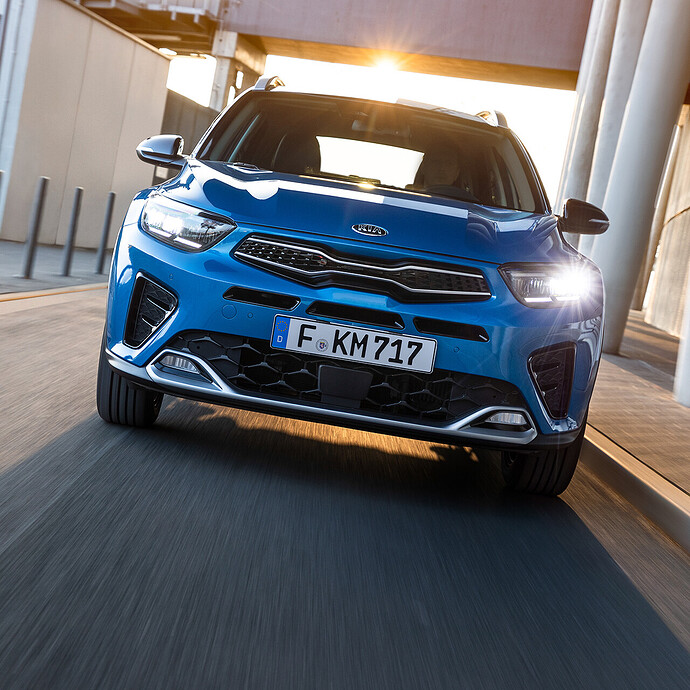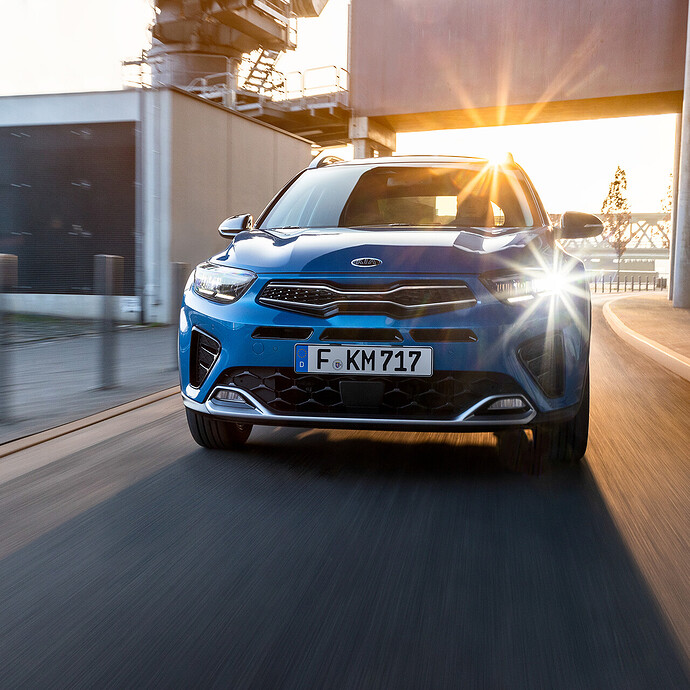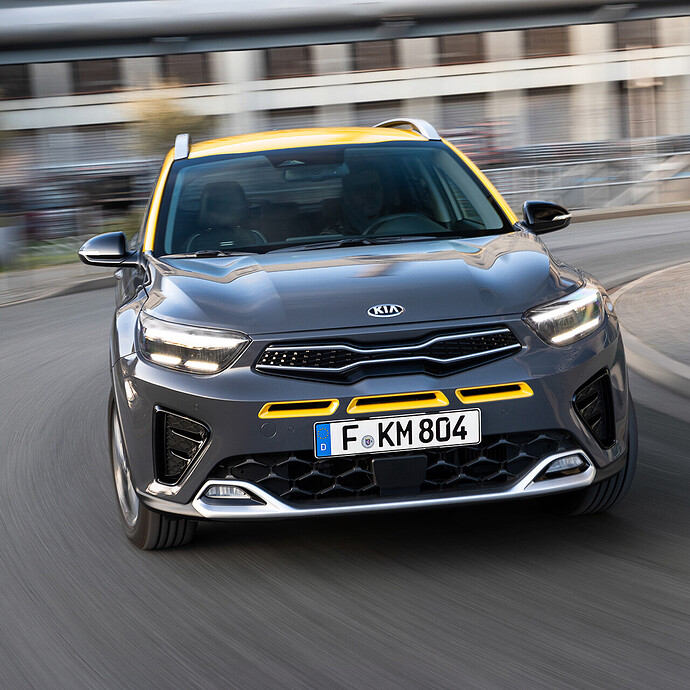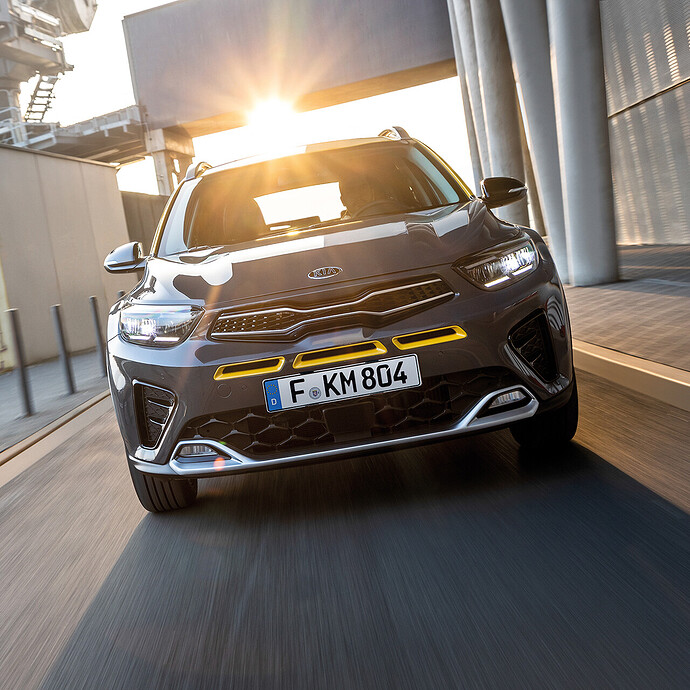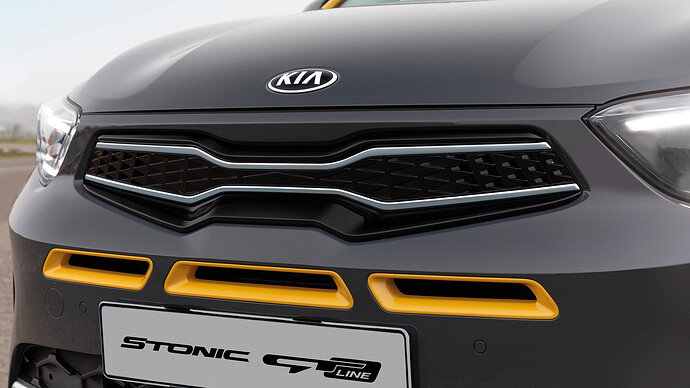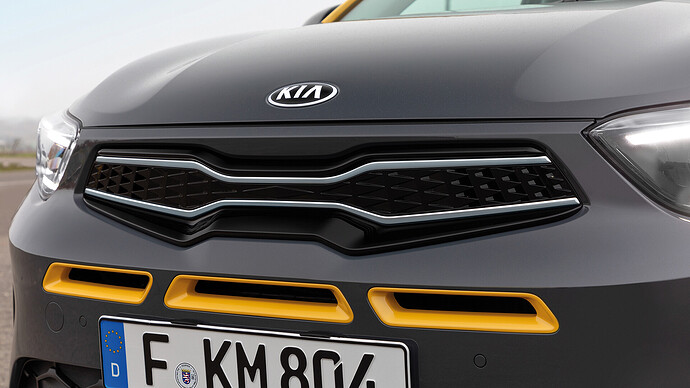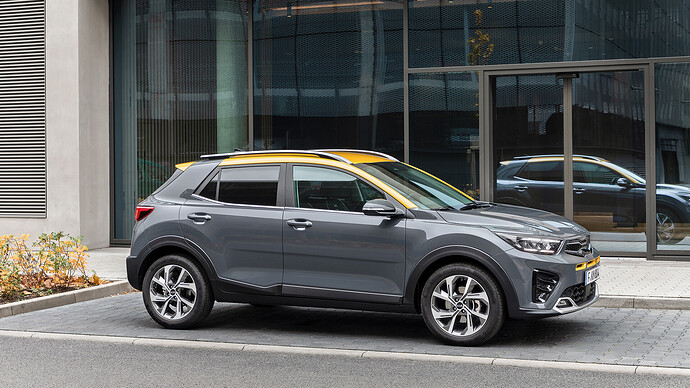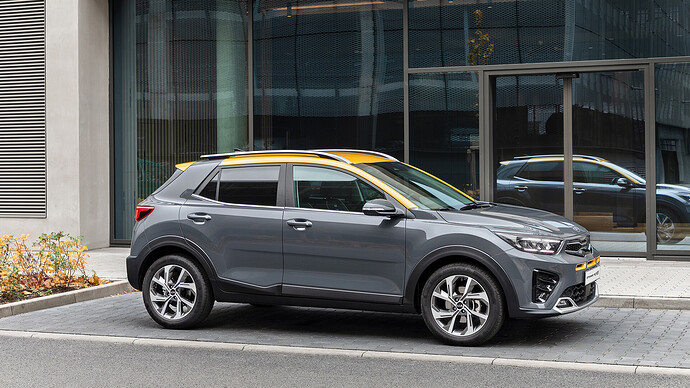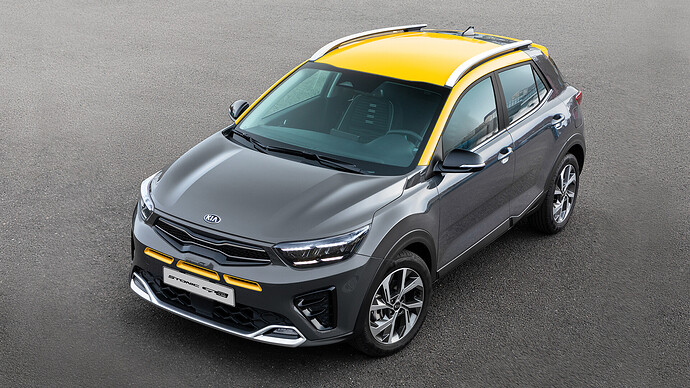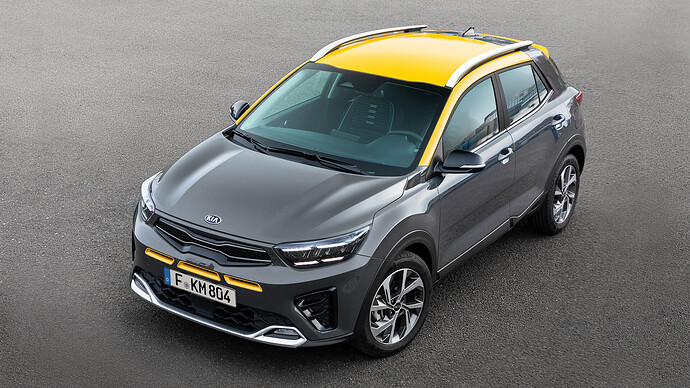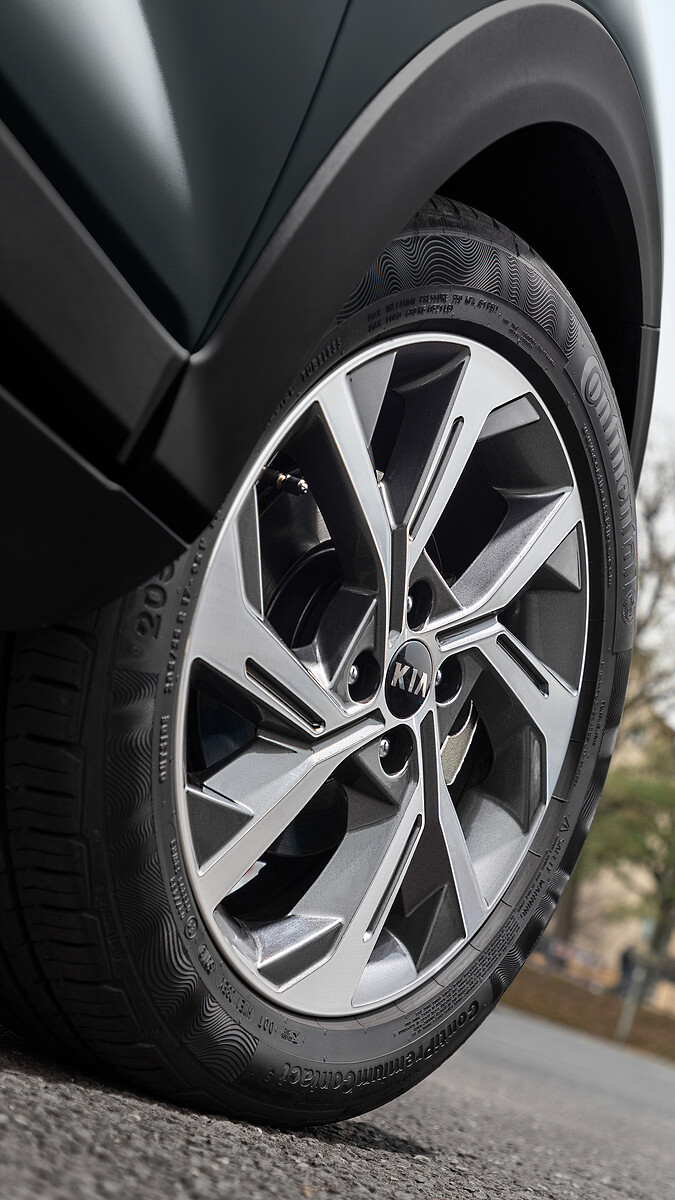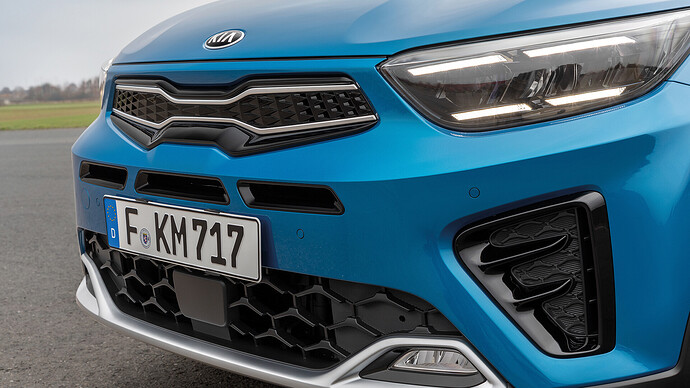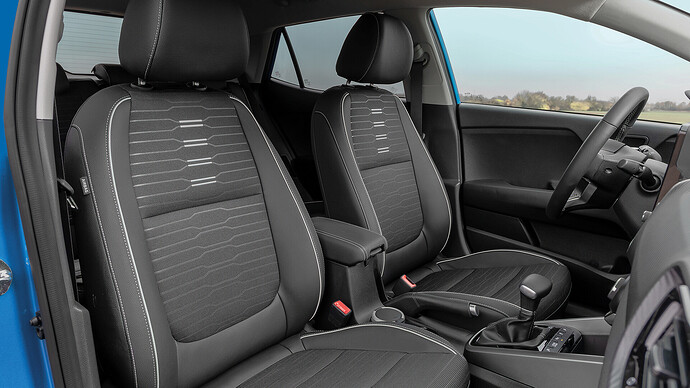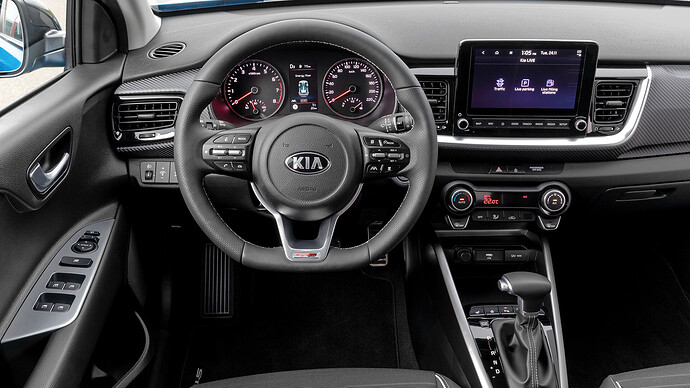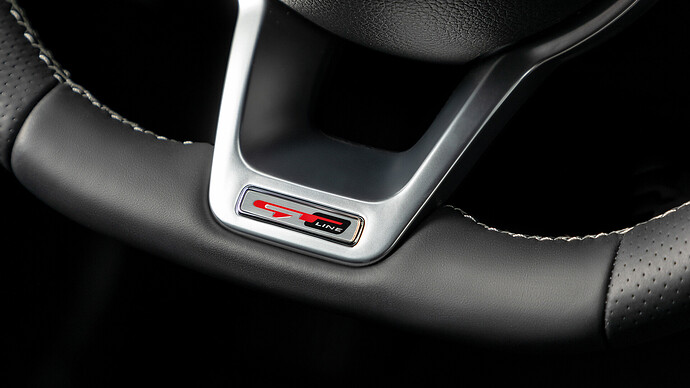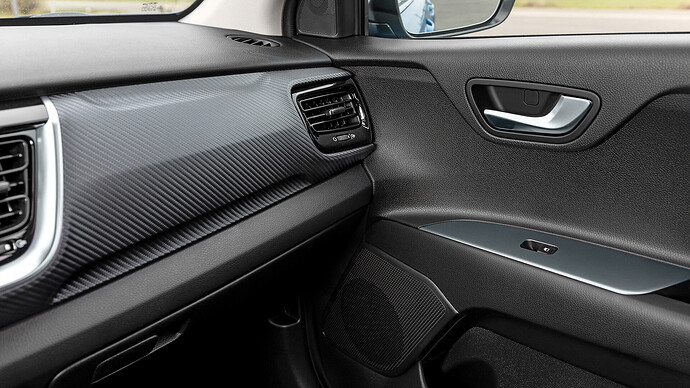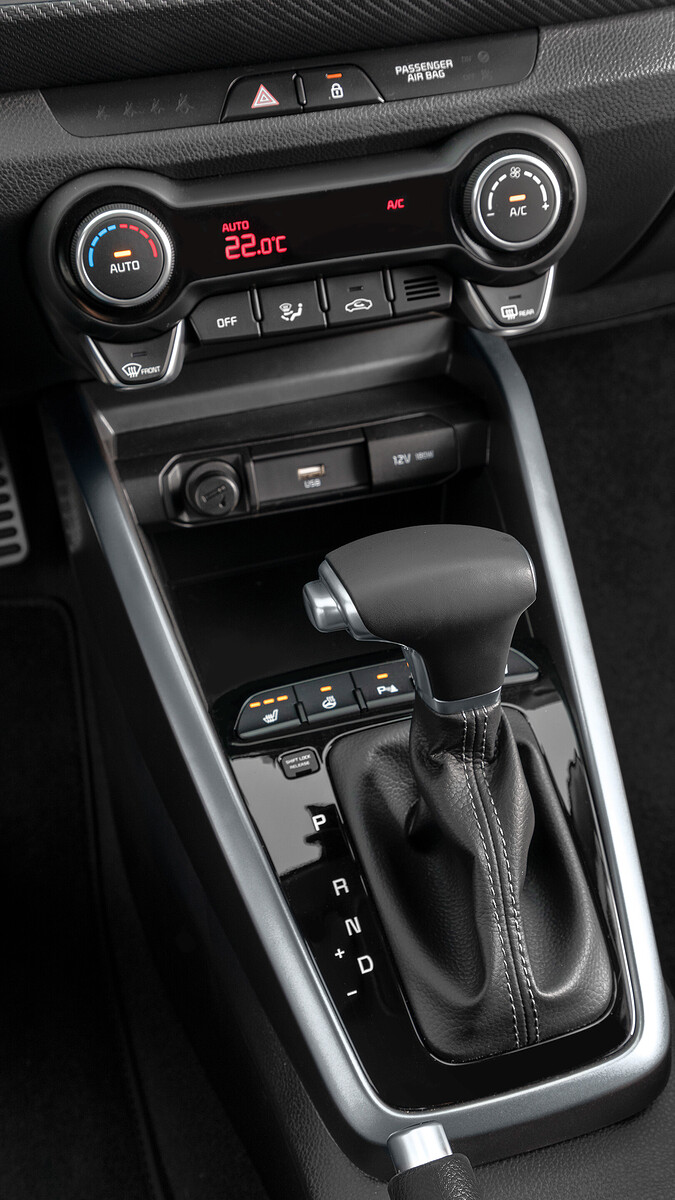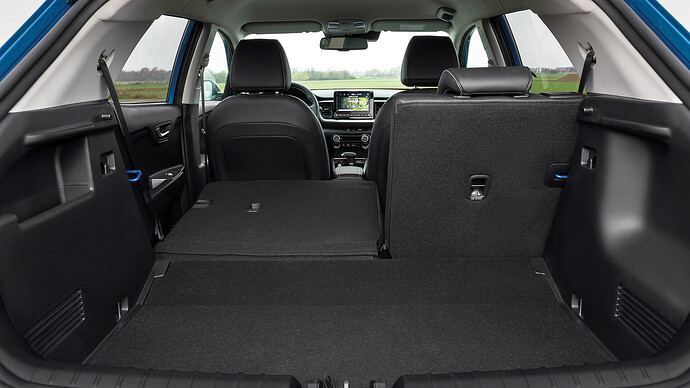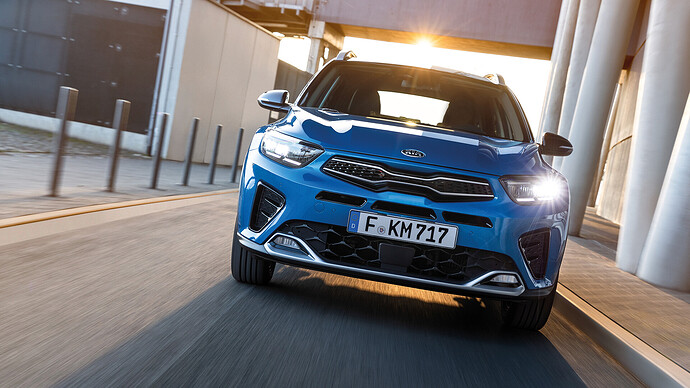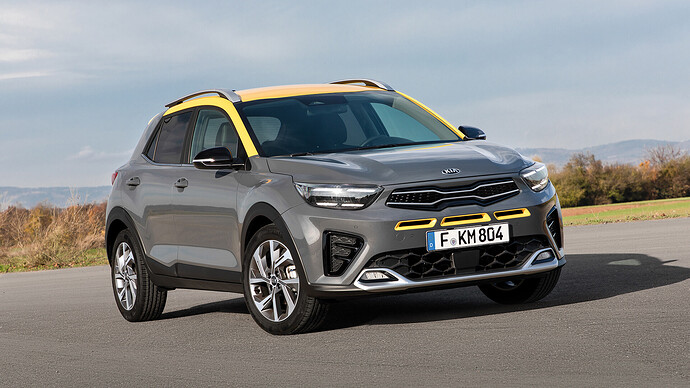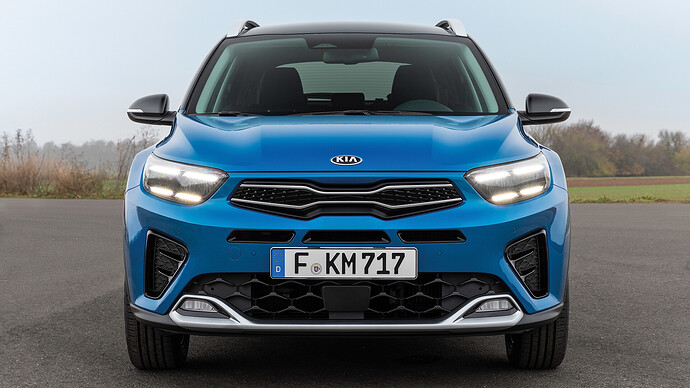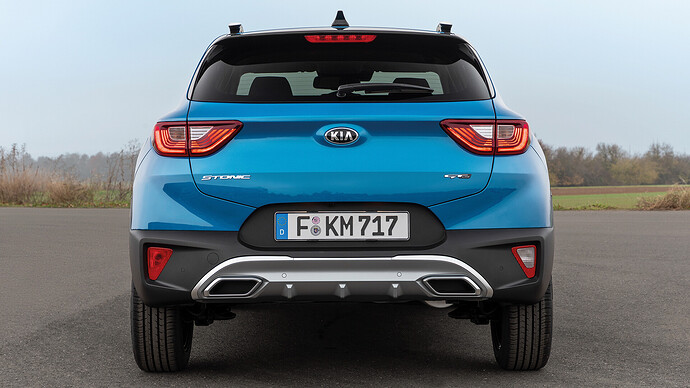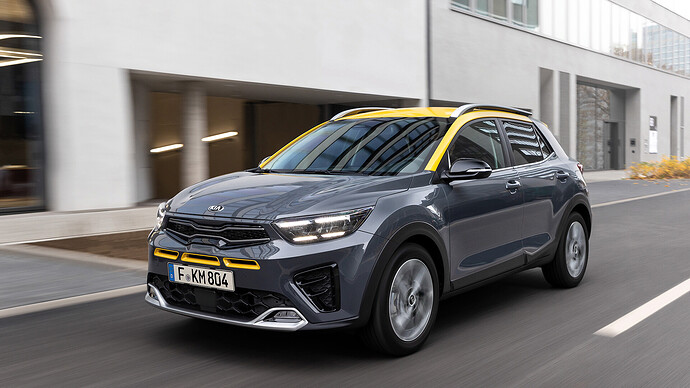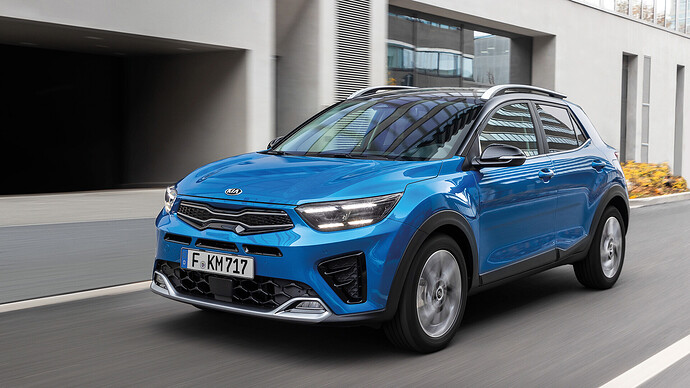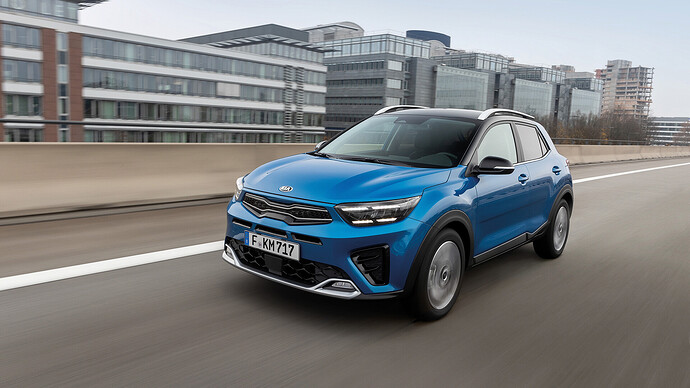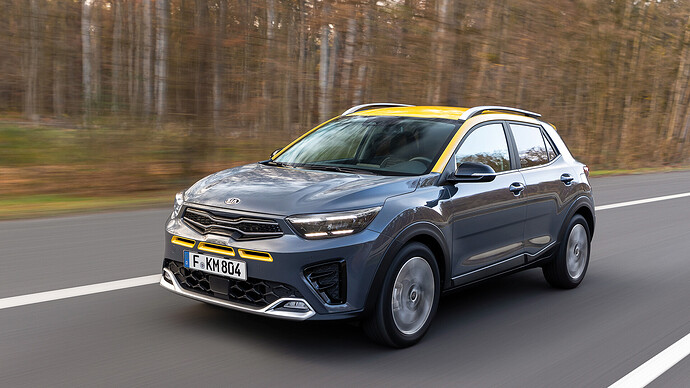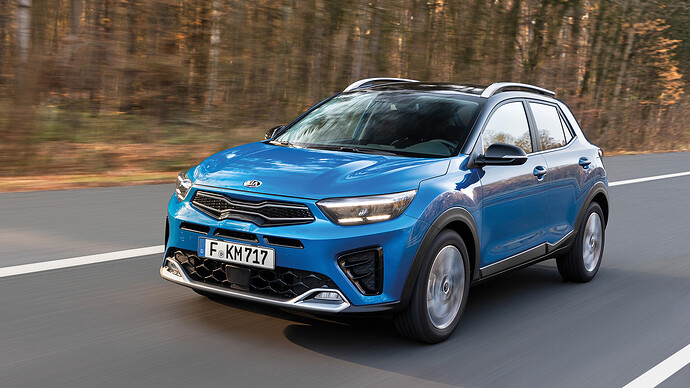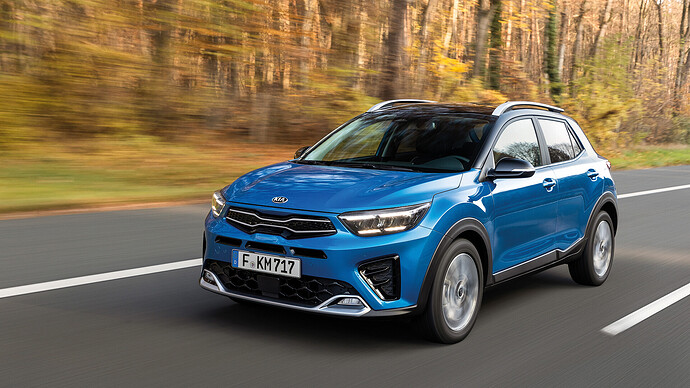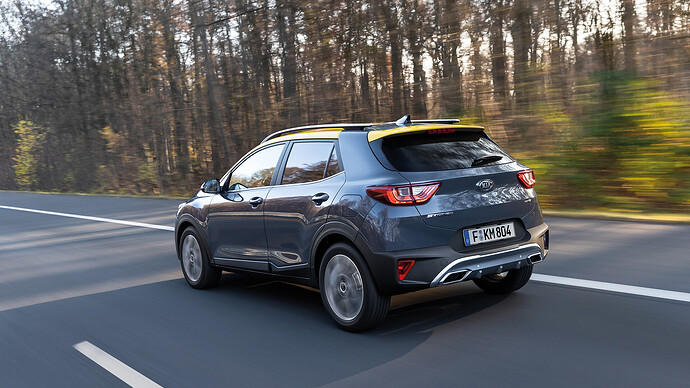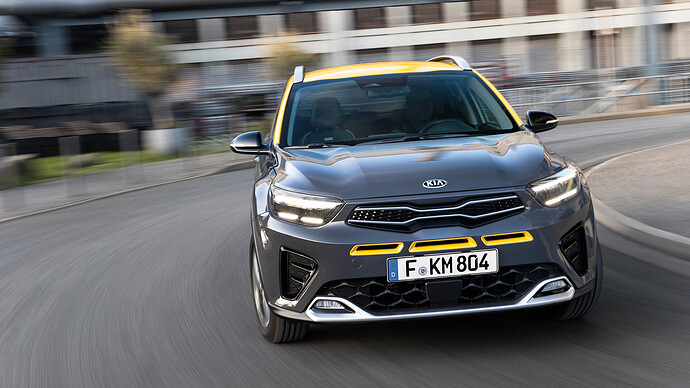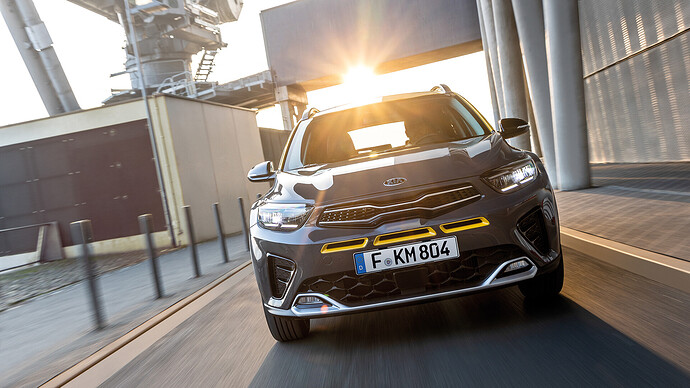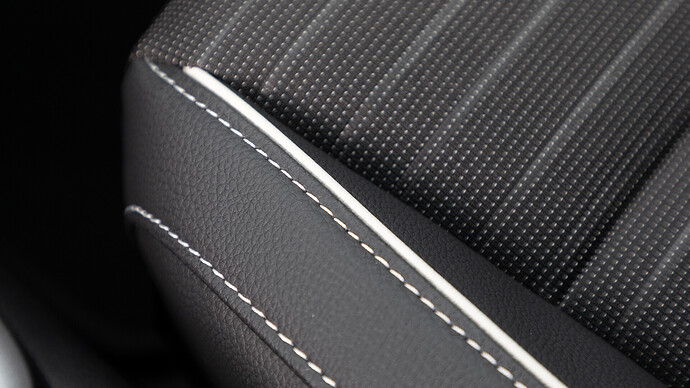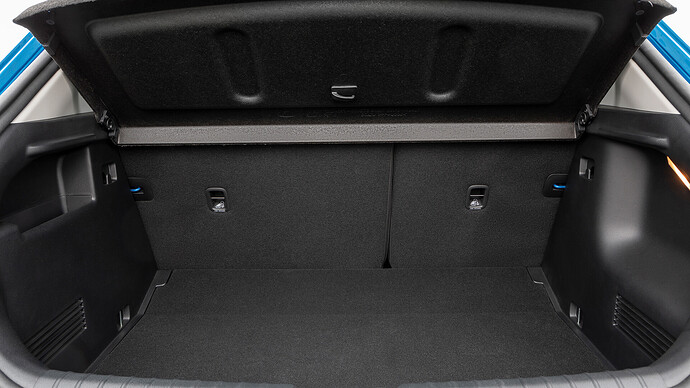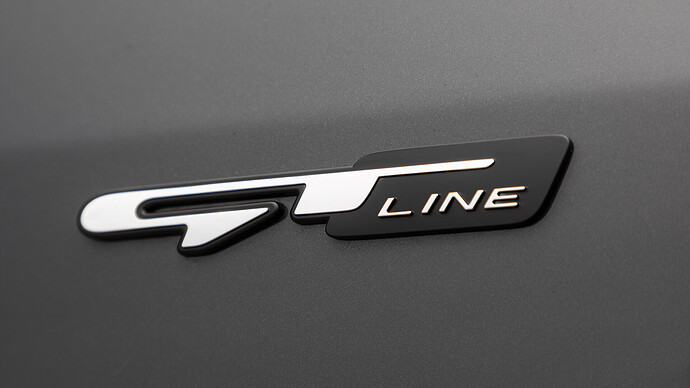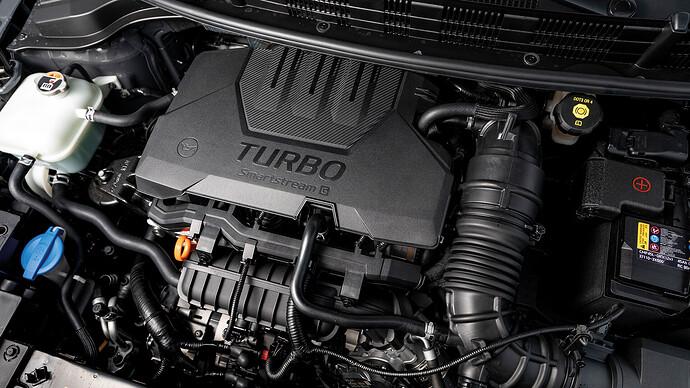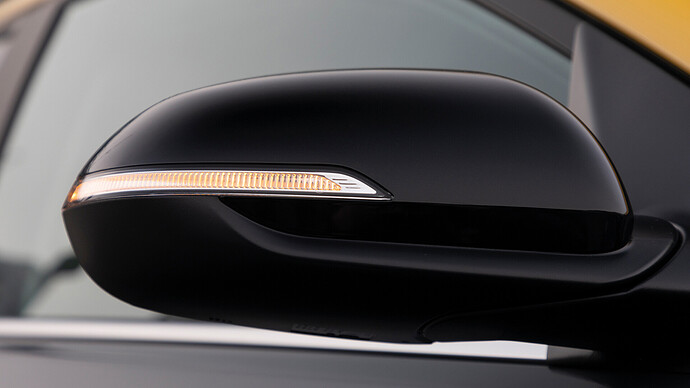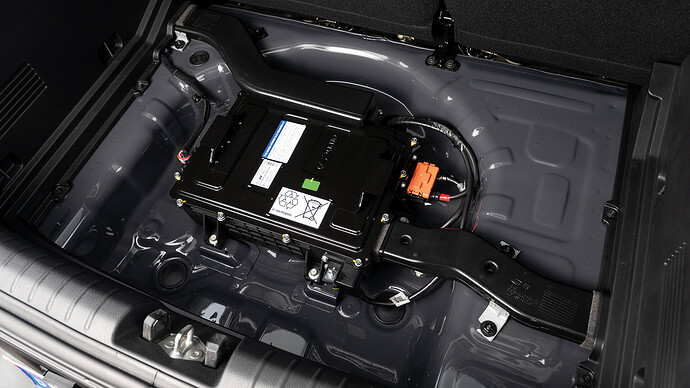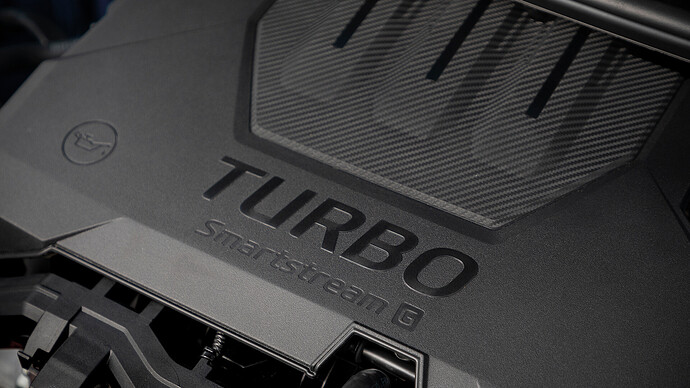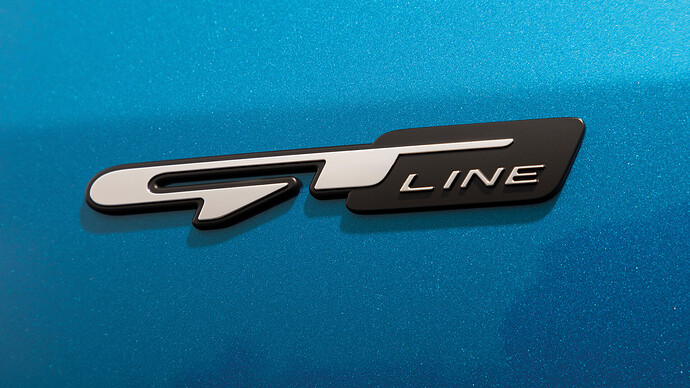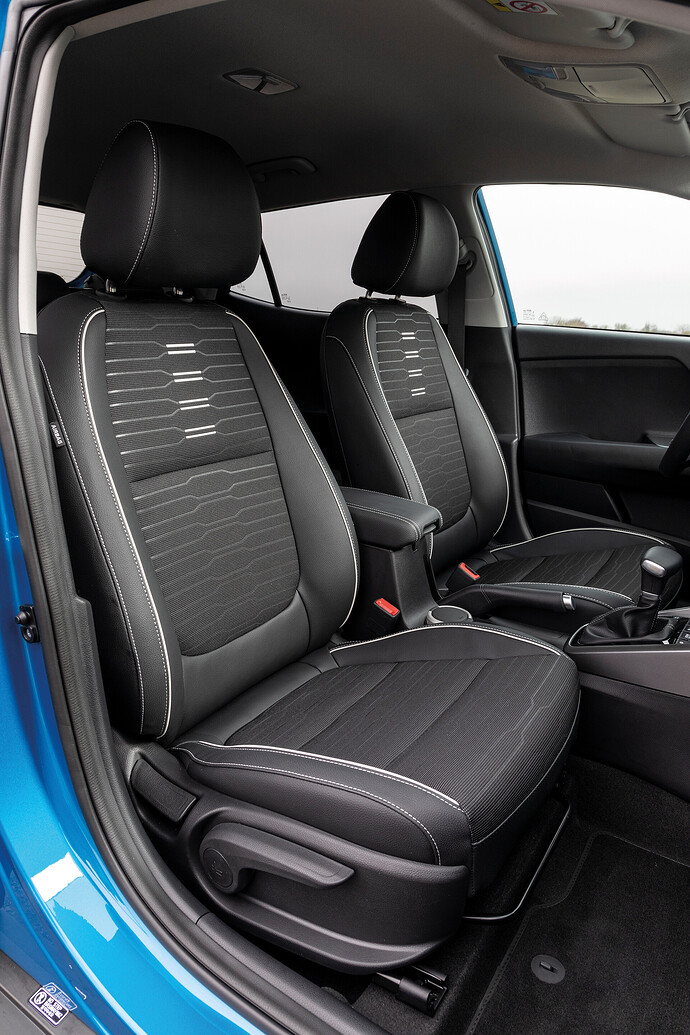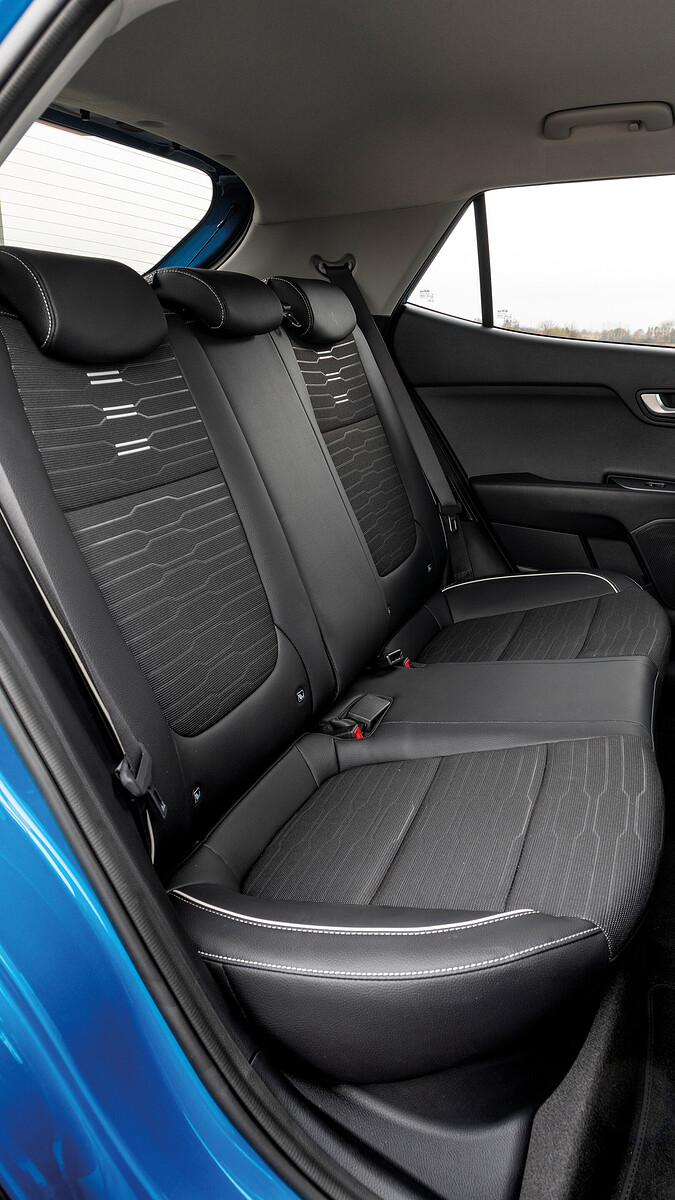The sport-inspired Kia Stonic GT Line
New GT Line specification for Kia’s European compact crossover
Sportier exterior design with new customisation options
Unique GT Line interior upgrades with Kia’s latest ‘connected car’ tech
Choice of 1.0-litre T-GDi engines, including mild-hybrid options
On-sale across Europe from Q4 2020
Summary
The Kia Stonic is the latest model line from the brand to earn a sports-inspired ‘GT Line’ specification. The Stonic GT Line brings the sportiest elements of the brand’s designs to the fore, with a more emotive appearance, inside and out, and exclusive GT Line design features. Like other models in the Stonic line-up, the GT Line model also offers scope for customisation with new two-tone exterior colour options, as well as range of mild-hybrid and non-hybrid powertrain options.
The Stonic has been a major success for Kia in Europe since sales began in 2017, with more than 150,000 units sold to-date; in 2019, it was Kia’s fourth best-selling model in Europe. The new GT Line variant dials up the Stonic’s best features, offering a design inspired by the most powerful cars in the Kia line-up. A new GT Line variant further enhances the desirability of the Stonic line-up in the highly competitive European B-segment.
Exterior design
A GT-inspired exterior design
The exterior design of the Stonic GT Line gives a sportier edge to the car’s urban crossover appearance, inspired by Kia’s powerful GT models, the Stinger, Ceed GT and ProCeed GT.
The Stonic’s basic design is the product of Kia’s European design studio in Frankfurt, Germany, produced in collaboration with the brand’s design headquarters in Namyang, Korea.
The Stonic’s compact dimensions and low centre of gravity allow for a sleek, lithe body, inspired by the form, function and confidence-inspiring appearance of Kia’s larger SUVs. With short overhangs at front and rear (830 mm and 730 mm), combined with a long bonnet, and low roof-line (1,520 mm in height), the Stonic boasts a sporty and confident on-road posture – without compromising the elevated seated position drivers expect of a compact SUV.
At 4,140 mm in length, the passenger cabin sits between bold wheel arches front and rear and a relatively long 2,580 mm wheelbase. Black body cladding around the base of the car, and skidplates at the front and rear, add a further element of purpose to the car’s design. A roof rack boosts functionality further.
The GT Line model in particular expresses a greater sense of sportiness thanks to its distinct front and rear bumper designs, giving it a more purposeful posture on the road. The front bumper is enhanced by integrated LED fog lamps, three distinct air intakes across the front of the car, and a metallic trim along the lower edge. The tiger-nose grille also gets its own unique design finish, while the door mirror caps are finished in black. Furthermore, GT Line models are available with new full LED headlamps as an option, creating a distinctive light signature. At the back, a more prominent rear bumper differentiates it from other Stonic variants, with a design mimicking dual exhausts and a rear diffuser and a GT Line badge on the tailgate.
As with existing variants of the model, customisation remains a key point of appeal for the Stonic GT Line. To-date, a third of all Stonic models have featured a two-tone exterior paint finish, and the GT Line offers the same choice to drivers. Depending on market, buyers can choose from up to 15 two-tone colour combinations for body and roof. The GT Line model extends these colour options further, with colour highlights around the three front bumper air intakes matching the contrast roof colour. All Stonic GT Line models are fitted with 17-inch aluminium alloy wheels.
Interior design
Unique interior upgrades with Kia’s latest ‘connected car’ features
The Stonic’s cabin echoes the appearance of the exterior, combining straight lines and smooth surfaces. The wide, horizontal plane of the dashboard enhances the feeling of space, while placing technology and ergonomics at its heart. The dashboard is angled slightly towards the driver for ease of use, and a ‘floating’ HMI (human-machine interface) sits in the centre of the dashboard. The touchscreen infotainment system results in fewer dashboard buttons, and brings cabin controls higher up into the driver’s natural line of sight.
The cabin of the Stonic GT Line is elevated with its own performance-inspired credentials compared to other models in the Stonic line-up. The most apparent modification is the adoption of carbon fibre-effect trim on the dashboard, a finish unique to GT Line models.
The seats are also unique to the new variant, trimmed in a combination of black cloth and synthetic leather with piping and contrast stitching in white. Drivers are also met with a new perforated leather D-cut steering wheel with GT Line logo and contrast stitching, as well as a 4.2-inch digital display between the dials in the instrument cluster.
Practicality and packaging
Smart packaging for a spacious, versatile cabin
Within its compact exterior dimensions, the Stonic GT Line features the same smart packaging that maximises interior space across the Stonic line-up. The cabin offers plenty of space for driver and passengers, with 1,070 and 850 mm legroom for front and rear passengers, 996 and 975 mm headroom, and generous shoulder room of 1,375 and 1,355 mm, respectively. In addition, the D-cut steering wheel and raised, flat base of the dashboard creates generous knee room for front passengers. The 45-litre fuel tank is located beneath the rear bench to provide rear passengers with ample legroom and a low seating position.
Other elements of the Stonic’s cabin are designed to provide practical and intelligent storage areas. A double-tray storage area at the base of the centre console accommodates the latest large smartphones, while every door pocket is shaped to accommodate a bottle (1.5-litres in the front, 0.5-litres in the rear). The 7.0-litre glove box is designed to accommodate iPads and other tablet devices. Drivers can also stow their sunglasses in the Stonic’s overhead compartment, while the sliding armrest – which can move back and forth by 55 mm to create a comfortable driving position – lifts to reveal another 3.3-litre storage area.
The Stonic’s versatile 352-litre (VDA) luggage bay features a two-step boot floor. This enables owners to expand or shrink the boot as required, and create a flat floor with the rear seats folded down. With the boot floor in its upper position, owners can create a hidden storage area beneath the boot floor for valuables. The Stonic offers one of the widest boot openings in the B-SUV class (1,022 mm) to accommodate larger items, and a pair of shopping bag hooks are integrated into the sides of the boot. With the rear seats folded down, the Stonic offers owners up to 1,155 litres of cargo capacity.
Technology
Kia’s latest ‘connected car’ features
Like other models in the Stonic line-up, the new GT Line variant is available with Kia’s latest ‘connected car’ and infotainment technologies. At the centre of the dashboard is a large 8.0-inch touchscreen infotainment system with Kia’s latest ‘Phase II’ UVO Connect system, enhancing vehicle connectivity and control.
The new infotainment system is offered with a choice of Display Audio or optional Satellite Navigation technologies depending on vehicle specification. In either guise, it features Bluetooth multi-connection, enabling users to connect up to two mobile devices at the same time – one for hands-free phone and media use; the other for media use only. It also offers wireless Apple CarPlay and Android Auto on models equipped with the Display Audio system, removing the need for many owners to connect their smartphone via a cable.
Kia’s new ‘Phase II’ UVO Connect telematics features include a range of on-board services including live traffic information, weather forecasts, points of interest (POIs), fuel prices, and details of potential on- and off-street parking – including price, location and availability. Online Voice Recognition lets users search for POIs, addresses, weather updates, or send text messages with voice commands. A new ‘Online Navigation’ routing service uses cloud-based real-time and historical traffic data to predict time-efficient routes more accurately than ever before.
Users can also access the accompanying UVO App, compatible with Android and Apple smartphones, which offers new ‘Phase II’ features such as Last Mile Navigation. This helps customers continue navigating to their destination after they have parked and left the car behind. It helps Kia customers navigate in towns and cities where parking hubs are often some distance away from shops, cafés and restaurants.
Powertrains
Choice of turbocharged and mild-hybrid powertrains
The Stonic GT Line offers Kia’s new gasoline mild-hybrid electric vehicle (MHEV) ‘EcoDynamics+’ powertrain. Pairing a ‘Smartstream’ 1.0-litre T-GDi (turbocharged gasoline direct injection) engine with a 48V MHEV system, the EcoDynamics+ powertrain delivers greater efficiency by seamlessly deploying and recuperating electric power. A compact 48-volt lithium-ion polymer battery supplements the engine’s torque output with electric power, via a new Mild-Hybrid Starter-Generator (MHSG) unit.
The MHSG is connected by belt to the engine’s crankshaft, and switches seamlessly between ‘motor’ and ‘generator’ modes. In ‘motor’ mode, under acceleration, the MHSG provides electric power assistance to reduce engine load and emissions. As the car decelerates, the MHSG has the ability under certain conditions to switch to ‘generator’ mode, recuperating energy from the crankshaft to recharge the battery.
The new Smartstream engine features Continuously Variable Valve Duration (CVVD) technology. This enables the engine to switch seamlessly between different combustion cycles depending on load, maximising efficiency in all driving situations. The Smartstream engine produces 100 ps or 120 ps with each engine offering a Drive Mode Select system with ‘Eco’, ‘Sport’ and ‘Normal’ modes.
Mild-hybrid variants of the Stonic GT Line – both 100 ps and 120 ps – are fitted with Kia’s new intelligent Manual Transmission (iMT) as standard, while 120 ps mild-hybrid models are available with an optional seven-speed double-clutch transmission (7DCT). iMT is Kia’s new ‘clutch-by-wire’ system, which contributes to fuel efficiency while retaining the driver engagement of a conventional manual transmission. Instead of a mechanical linkage, the iMT’s clutch is actuated electronically. It integrates seamlessly with the MHSG to switch off the engine earlier than Kia’s Idle Stop & Go start-stop system when coasting to a halt.
Both transmissions, iMT and 7DCT, enable periods of engine-off ‘sailing’ to improve fuel efficiency in Eco mode. This operates at speeds of up to 125 km/h (77 mph), and the engine reactivates when the driver pushes the accelerator, brake or clutch pedals.
As well as EcoDynamics+ models, the Stonic GT Line also offers a non-hybrid Smartstream 1.0-litre T-GDi engine, producing 100 ps and paired with a choice of six-speed manual transmission or 7DCT.
Ride and handling
Engaging handling and a sporty ride
The Stonic GT Line brings an exciting and confident dynamic character to the B-SUV segment. With ride and handling characteristics honed on a variety of European roads to match local preferences, it combines sporty and precise handling with straight-line stability and a smooth ride at higher speeds.
The Stonic’s front and rear suspension are tuned to deliver sporty, confidence-inspiring dynamics, less roll than rivals, and direct and immediate responses – resulting in a more fun-to-drive character. Hydraulic rebound stoppers on the front axle also absorb impacts more smoothly when driving over broken road surfaces, while also limiting ‘float’ over undulations at higher speeds.
Technology also plays a role in enhancing driver enjoyment, as well as safety. The front-wheel drive Stonic features Electronic Stability Control (ESC) and Kia’s Vehicle Stability Management (VSM) system as standard. A range of additional electronic driver support technologies also make the car more enjoyable and confidence-inspiring to drive on all roads, in all conditions. These include:
• Torque Vectoring by Braking: intelligently brakes the inside wheels to reduce understeer while accelerating around corners
• Cornering Brake Control: brakes the inside wheels under cornering to maintain course and enhance driving stability
• Straight Line Stability: brakes individual wheels under heavy braking – for instance, during an emergency stop – to stop the car weaving
• Hill Start Assist: ideal for a car that will predominantly be used in urban environments, where stop-start traffic conditions typically prevail
Safety
New ADAS safety technologies across the Stonic range
The upgraded Stonic range – including the Stonic GT Line – features several of Kia’s latest Advanced Driving Assistance Systems (ADAS). These include Forward Collision-Avoidance Assist (FCA) with pedestrian, vehicle and newly introduced cyclist recognition, Lane Keeping Assist (LKA), Driver Attention Warning (DAW), Blind-Spot Collision Warning (BCW) and Blind-Spot Collision-Avoidance Assist (BCA), Intelligent Speed Limit Warning (ISLW), Smart Cruise Control (SCC), and Lane Following Assist (LFA).
LFA in collaboration with SCC controls acceleration, braking and steering depending on the vehicles in front and road conditions. Operating at speeds below 180 kph, it uses camera and radar sensors to maintain a safe distance from the car in front, while monitoring road markings to keep the Stonic in the centre of its lane. Rear Cross-Traffic Collision-Avoidance Assist (RCCA) and front and rear parking sensors are available, as well as a new Rear Occupant Alert (ROA) system, which alerts the driver if they inadvertently leave a vulnerable passenger or pet in the car.
The upgraded model is fitted with six airbags throughout the cabin, as well as ISOFIX child-seat tether and anchor points.
Production and sales
Manufactured in Korea
The Kia Stonic GT Line is produced at Kia’s Sohari production facility in Korea. The model has been on sale across Europe since the final quarter of 2020, and all models offer Kia’s unique 7-year, 150,000-kilometre warranty as standard.
- Ends -
KIA STONIC GT-LINE
TECHNICAL SPECIFICATIONS (EUROPE)
Body and chassis
Five-door, five-seater compact crossover, with all-steel unitary construction bodyshell. Choice of gasoline and gasoline mild-hybrid three-cylinder powertrains, driving the front wheels via six-speed manual or seven-speed double-clutch transmission
Engines
1.0-litre / 120 ps ‘Smartstream’ T-GDi (1.0T MHEV 120)
Type Three-cylinder in-line, turbocharged, gasoline particulate filter
Capacity 1.0-litres, 998 cc
Bore and stroke 71.0 x 84.0 mm
Compression ratio 10.5:1
Max power 120 ps (88 kW) @ 6,000 rpm
Max torque iMT 172 Nm (127 lb ft) @ 1,500~4,000 rpm
DCT 200 Nm (148 lb ft) @ 2,000~3,500 rpm
Valves 12 (four per cylinder)
Fuel system Direct injection
1.0-litre / 100 ps ‘Smartstream’ T-GDi (1.0T MHEV 100)
Type Three-cylinder in-line, turbocharged, gasoline particulate filter
Capacity 1.0-litres, 998 cc
Bore and stroke 71.0 x 84.0 mm
Compression ratio 10.5:1
Max power 100 ps (74 kW) @ 4,500-6,000 rpm
Max torque 172 Nm (127 lb ft) @ 1,500~4,000 rpm
Valves 12 (four per cylinder)
Fuel system Direct injection
1.0-litre / 100 ps ‘Smartstream’ T-GDI gasoline (1.0T)
Type Three-cylinder in-line, turbocharged, gasoline particulate filter
Capacity 1.0-litres, 998 cc
Bore and stroke 71.0 x 84.0 mm
Compression ratio 10.0:1
Max power 100 ps (74 kW) @ 4,500-6,000 rpm
Max torque 172 Nm (127 lb ft) @ 1,500~4,000 rpm
Valves 12 (four per cylinder)
Fuel system Direct injection
Transmissions
MT: Six-speed manual transmission
iMT: Six-speed intelligent manual transmission
DCT: Seven-speed double clutch transmission
1.0T MHEV (120) 1.0T MHEV (100) 1.0T (100)
MT — — Standard
iMT Standard Standard —
7DCT Optional — Optional
Gear ratios
1.0T MHEV (120) 1.0T MHEV (100) 1.0T (100)
iMT DCT iMT MT DCT
1 3.615 3.933 3.615 3.615 3.933
2 1.955 2.381 1.955 1.955 2.381
3 1.286 2.143 1.286 1.286 2.143
4 0.971 1.128 0.971 0.971 1.128
5 0.794 0.860 0.794 0.794 0.860
6 0.667 0.923 0.667 0.667 0.923
7 — 0.756 — — 0.756
Reverse 3.700 5.448 3.700 3.700 5.448
Final drive 4.563 4.929 / 3.623* 4.267 4.267 4.929 / 3.623
*gears 1,2,4,5 / 3,6,7,R
Drivetrains
Front-wheel drive (all models)
Steering
Type Electric motor-driven rack-and-pinion power steering
Steering ratio 14.1:1
Turns (lock-to-lock) 2.52
Turning circle 10.4 metres
Suspension and damping
Front Fully independent by subframe-mounted MacPherson struts, coil springs and gas-filled shock absorbers, with anti-roll stabiliser bar
Rear Semi-independent by CTBA (coupled torsion beam axle), coil springs and gas-filled shock absorbers, with anti-roll stabiliser bar
Brakes
Front 280 mm, ventilated disc
Rear 262 mm, solid disc
Wheels and tyres
Standard Alloy 17-inch, 205/55 R17 tyres
Spare Tyre mobility kit or optional temporary spare wheel
Dimensions (mm)
Exterior
Overall length 4,140 Overall width* 1,760
Overall height 1,500 Wheelbase 2,580
Front overhang 830 Rear overhang 730
Ground clearance 183
*excluding door mirrors
Interior
1st row 2nd row
Head room 996 975
Leg room 1,070 850
Shoulder room 1,375 1,355
Hip room 1,344 1,330
Capacities
Fuel tank 45 litres
Luggage (VDA) 352 litres (with tyre mobility kit; 332 litres with temporary spare wheel)
1,155 litres (rear seats folded)
Weights (kg)
1.0T MHEV (120) 1.0T MHEV (100) 1.0T (100)
iMT DCT iMT MT DCT
Curb weight 1,253 1,288 1,253 1,223 1,258
Gross weight 1,680 1,710 1,680 1,650 1,680
Tow load, braked 900 900 900 900 900
Tow load, unbraked 450 450 450 450 450
Tow tongue load 75 75 75 75 75
Roof load capacity 70 70 70 70 70
Performance
1.0T MHEV (120) 1.0T MHEV (100) 1.0T (100)
iMT DCT iMT MT DCT
Top speed (km/h) 185 185 183 183 180
0-100 km/h 10.4 10.4 10.7 10.7 11.7
80-120 km/h 12.1 7.6 13.5 13.5 9.2
Fuel efficiency and emissions (WLTP)*
1.0T MHEV (120)
iMT DCT
Fuel economy, 5.627~5.09 5.673
(combined,
L/100km)
CO2 emissions 128~116 129
(combined, g/km)
1.0T MHEV (100)
iMT
Fuel economy, 5.682~5.244
(combined,
L/100km)
CO2 emissions 129~119
(combined, g/km)
1.0T (100)
MT DCT
Fuel economy, 5.834~5.381 5.952
(combined,
L/100km)
CO2 emissions 133~122 135
(combined, g/km)
*Fuel economy and emissions: driving range standards are calculated using the World Harmonised Light Vehicle Test Procedure (WLTP).
